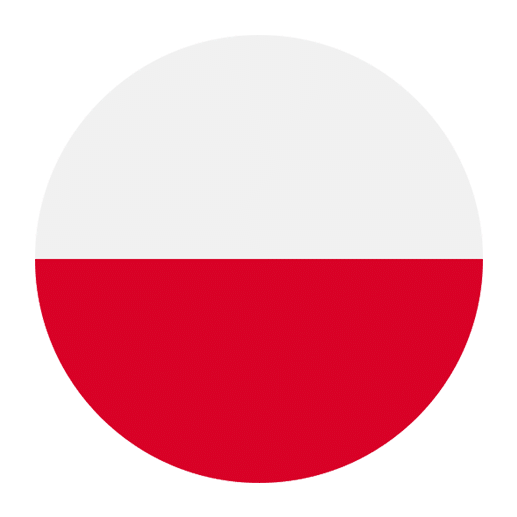Learning Polish can be an exciting journey, especially when you start to understand how its verb conjugations work. Polish, being a Slavic language, has a unique set of rules and structures that can seem daunting at first. However, with the right approach and understanding, mastering Polish verb conjugations is entirely achievable. This article will guide you through the essentials of Polish verb conjugations, providing you with a comprehensive overview that will help you on your language learning path.
Understanding the Basics of Polish Verb Conjugations
Polish verbs, like those in many other languages, change their form depending on several factors, including tense, mood, aspect, and the subject of the sentence (who is performing the action). Unlike English, Polish verbs are highly inflected, meaning that their endings change much more frequently to convey different grammatical meanings.
Person and Number
In Polish, verbs conjugate according to the subject’s person (first, second, or third) and number (singular or plural). Here are the basic personal endings for the present tense, using the verb “mówić” (to speak) as an example:
Singular:
– ja mówię (I speak)
– ty mówisz (you speak, informal)
– on/ona/ono mówi (he/she/it speaks)
Plural:
– my mówimy (we speak)
– wy mówicie (you all speak, informal)
– oni/one mówią (they speak – oni for masculine or mixed gender, one for feminine only)
Verb Aspects: Imperfective and Perfective
Polish verbs come in pairs known as aspects. The imperfective aspect denotes an ongoing, habitual, or repeated action, while the perfective aspect indicates a completed action. For instance:
– Imperfective: pisać (to write, ongoing)
– Perfective: napisać (to write, completed)
Each aspect has its own conjugation rules and forms, which can sometimes mean learning two different verbs for the same action.
Verb Groups
Polish verbs are divided into four main conjugation groups. Each group follows a specific pattern for conjugation. Here’s a brief overview of each group:
Group 1: Verbs ending in -ać (e.g., mówić – to speak)
– ja mówię
– ty mówisz
– on/ona/ono mówi
– my mówimy
– wy mówicie
– oni/one mówią
Group 2: Verbs ending in -ić or -yć (e.g., robić – to do)
– ja robię
– ty robisz
– on/ona/ono robi
– my robimy
– wy robicie
– oni/one robią
Group 3: Verbs ending in -eć or -ąć (e.g., umieć – to know how to)
– ja umiem
– ty umiesz
– on/ona/ono umie
– my umiemy
– wy umiecie
– oni/one umieją
Group 4: Irregular verbs (e.g., być – to be)
– ja jestem
– ty jesteś
– on/ona/ono jest
– my jesteśmy
– wy jesteście
– oni/one są
Conjugating Verbs in Different Tenses
Polish has three primary tenses: present, past, and future. Each tense has its own set of conjugation rules.
Present Tense
The present tense is used to describe actions that are currently happening or habitual actions. The conjugation patterns for the present tense have been demonstrated in the verb groups section above.
Past Tense
The past tense in Polish is more complex, as it involves gender and number. Here’s how to conjugate the verb “mówić” in the past tense:
Masculine Singular:
– ja mówiłem (I spoke)
– ty mówiłeś (you spoke, informal)
– on mówił (he spoke)
Feminine Singular:
– ja mówiłam (I spoke)
– ty mówiłaś (you spoke, informal)
– ona mówiła (she spoke)
Neuter Singular:
– ono mówiło (it spoke)
Masculine Plural:
– my mówiliśmy (we spoke)
– wy mówiliście (you all spoke, informal)
– oni mówili (they spoke)
Feminine Plural:
– my mówiłyśmy (we spoke)
– wy mówiłyście (you all spoke, informal)
– one mówiły (they spoke)
This pattern applies to most verbs, but always check for irregularities.
Future Tense
Polish future tense can be formed in two ways:
1. Simple Future Tense: Used with perfective verbs. For example:
– ja napiszę (I will write)
– ty napiszesz (you will write)
– on/ona/ono napisze (he/she/it will write)
– my napiszemy (we will write)
– wy napiszecie (you all will write)
– oni/one napiszą (they will write)
2. Compound Future Tense: Used with imperfective verbs, combining the future form of “to be” (być) with the infinitive or past participle of the main verb. For example:
– ja będę pisać/pisał(a) (I will be writing)
– ty będziesz pisać/pisał(a) (you will be writing)
– on/ona/ono będzie pisać/pisał(a) (he/she/it will be writing)
– my będziemy pisać/pisali(y) (we will be writing)
– wy będziecie pisać/pisali(y) (you all will be writing)
– oni/one będą pisać/pisali(y) (they will be writing)
Verb Conjugation in Different Moods
Polish verbs conjugate differently depending on the mood: indicative, imperative, and conditional.
Indicative Mood
The indicative mood is used for statements of fact and questions. The conjugation patterns for this mood have been covered in the sections on tenses.
Imperative Mood
The imperative mood is used for commands or requests. Here is how to form the imperative for “mówić”:
– (ty) mów! (speak!, informal singular)
– (wy) mówcie! (speak!, informal plural)
– (my) mówmy! (let’s speak!)
For more polite or formal commands, you can use the third person with “proszę” (please):
– Proszę mówić! (Please speak!)
Conditional Mood
The conditional mood is used for hypothetical or polite requests. It is formed by adding conditional endings to the past tense stem of the verb, combined with “by” particles. For example, with “mówić”:
– ja mówiłbym/mówiłabym (I would speak, masculine/feminine)
– ty mówiłbyś/mówiłabyś (you would speak, masculine/feminine)
– on/ona/ono mówiłby/mówiłaby/mówiłoby (he/she/it would speak)
– my mówilibyśmy/mówiłybyśmy (we would speak, masculine/feminine)
– wy mówilibyście/mówiłybyście (you all would speak, masculine/feminine)
– oni/one mówiliby/mówiłyby (they would speak, masculine/feminine)
Common Irregular Verbs
Like any language, Polish has its share of irregular verbs that don’t follow standard conjugation patterns. Some of the most common ones include:
Być (to be):
– Present: jestem, jesteś, jest, jesteśmy, jesteście, są
– Past: byłem/byłam, byłeś/byłaś, był/była/było, byliśmy/byłyśmy, byliście/byłyście, byli/były
– Future: będę, będziesz, będzie, będziemy, będziecie, będą
Mieć (to have):
– Present: mam, masz, ma, mamy, macie, mają
– Past: miałem/miałam, miałeś/miałaś, miał/miała/miało, mieliśmy/miałyśmy, mieliście/miałyście, mieli/miały
– Future: będę miał/miała, będziesz miał/miała, będzie miał/miała/miało, będziemy mieli/miały, będziecie mieli/miały, będą mieli/miały
Chcieć (to want):
– Present: chcę, chcesz, chce, chcemy, chcecie, chcą
– Past: chciałem/chciałam, chciałeś/chciałaś, chciał/chciała/chciało, chcieliśmy/chciałyśmy, chcieliście/chciałyście, chcieli/chciały
– Future: będę chciał/chciała, będziesz chciał/chciała, będzie chciał/chciała/chciało, będziemy chcieli/chciały, będziecie chcieli/chciały, będą chcieli/chciały
Tips for Learning Polish Verb Conjugations
Learning Polish verb conjugations can be challenging, but here are some tips to help you master them:
1. Practice Regularly: Consistent practice is key. Use flashcards, apps, or language exchange partners to keep practicing different verb forms.
2. Focus on Patterns: Pay attention to the patterns in each conjugation group. Recognizing these patterns can make it easier to predict the conjugation of new verbs.
3. Use Mnemonics: Create mnemonics or memory aids to help remember irregular verbs and their conjugations.
4. Engage with Native Content: Listening to Polish music, watching Polish movies, or reading Polish books can help you see verbs in context, making it easier to remember their forms.
5. Practice Speaking: Try to use new verbs in conversation as much as possible. Speaking with native speakers or language partners can help reinforce your learning.
6. Write Often: Writing sentences or short paragraphs using new verbs can help solidify your understanding of their conjugations.
Conclusion
Mastering Polish verb conjugations is a fundamental step in becoming proficient in the language. While it may seem complex at first, understanding the patterns and practicing regularly can make the process much more manageable. Remember to be patient with yourself and enjoy the journey of learning a new language. With dedication and practice, you’ll find yourself becoming more comfortable and confident in using Polish verbs in no time. Happy learning!

